Abstract
The impact of legume cultivation on the establishment and persistence of an inoculant strain of Rhizobium phaseoli and its ability to compete with a resident population of R. phaseoli for nodule occupancy was examined utilizing strain-specific fluorescent antibodies. The soil (Hubbard loamy sand) was inoculated homogeneously with 5 × 105 cells per g of soil and confined in plastic cylinders kept in field plots. Inoculated and uninoculated cylinders were either left fallow or planted to two seeds of legumes. Two hosts, navy bean (Phaseolus vulgaris L.) cv. Seafarer and snap bean cv. Picker, as well as a nonhost, soybean (Glycine max (L.) Merr.) cv. Wilkin, were used. Inoculant Viking 1 was highly stimulated in all three rhizospheres sampled at 6 (flowering), 10 (podfill), and 17 (decay) weeks and in the following spring, whereas counts in fallow soil decreased rapidly. Although the overwintering population remained highest in the vicinity of decaying host roots, Viking 1 persisted, even in fallow soil, to produce abundant nodulation of host plants the following spring. Viking 1 was an excellent competitor for nodulation sites on the roots of the hosts; it thoroughly outcompeted the resident population of R. phaseoli, occupying virtually 100% of the nodules under inoculated conditions in all experiments.
Full text
PDF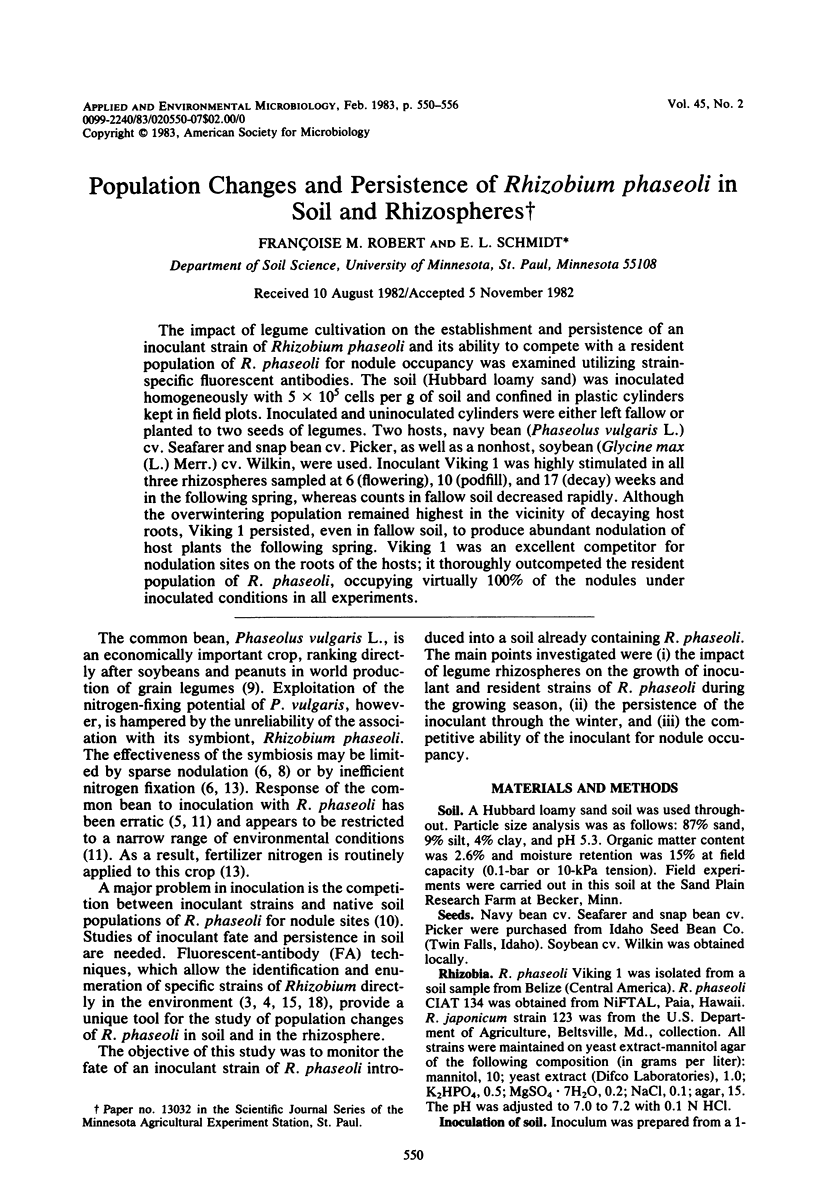
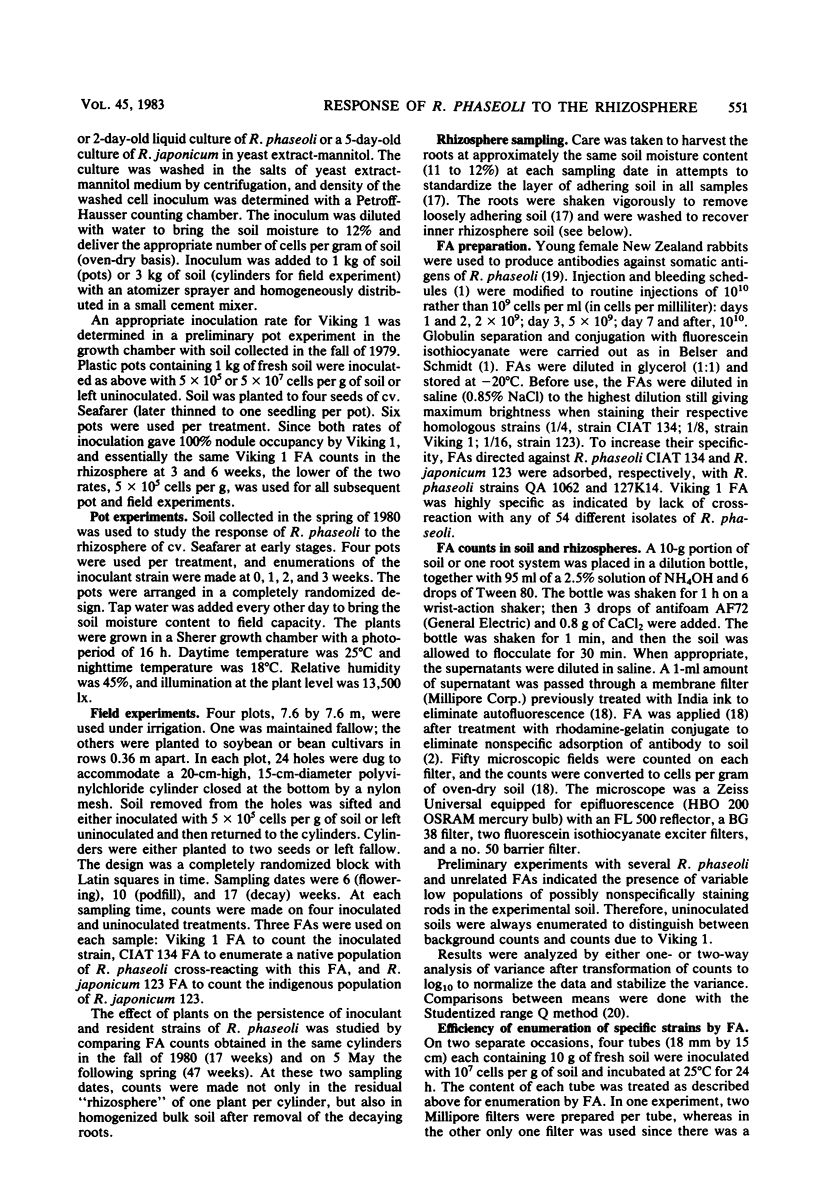
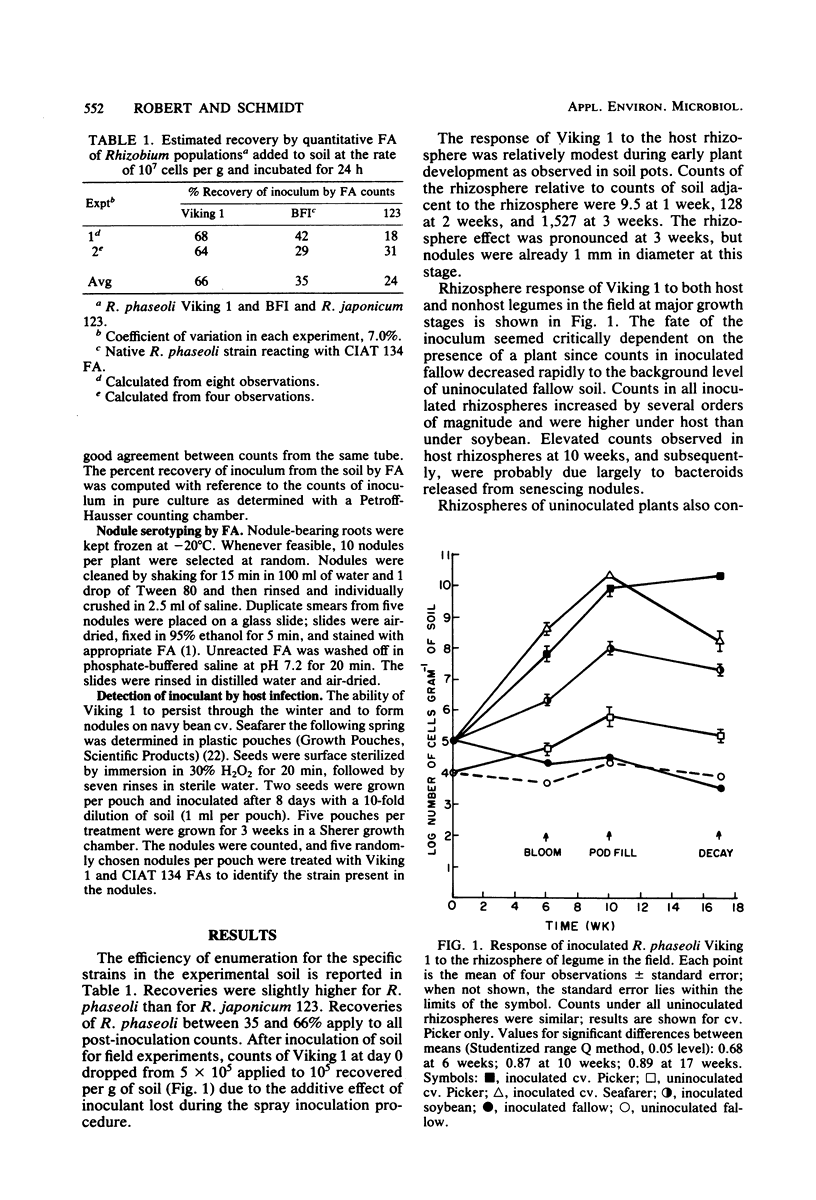
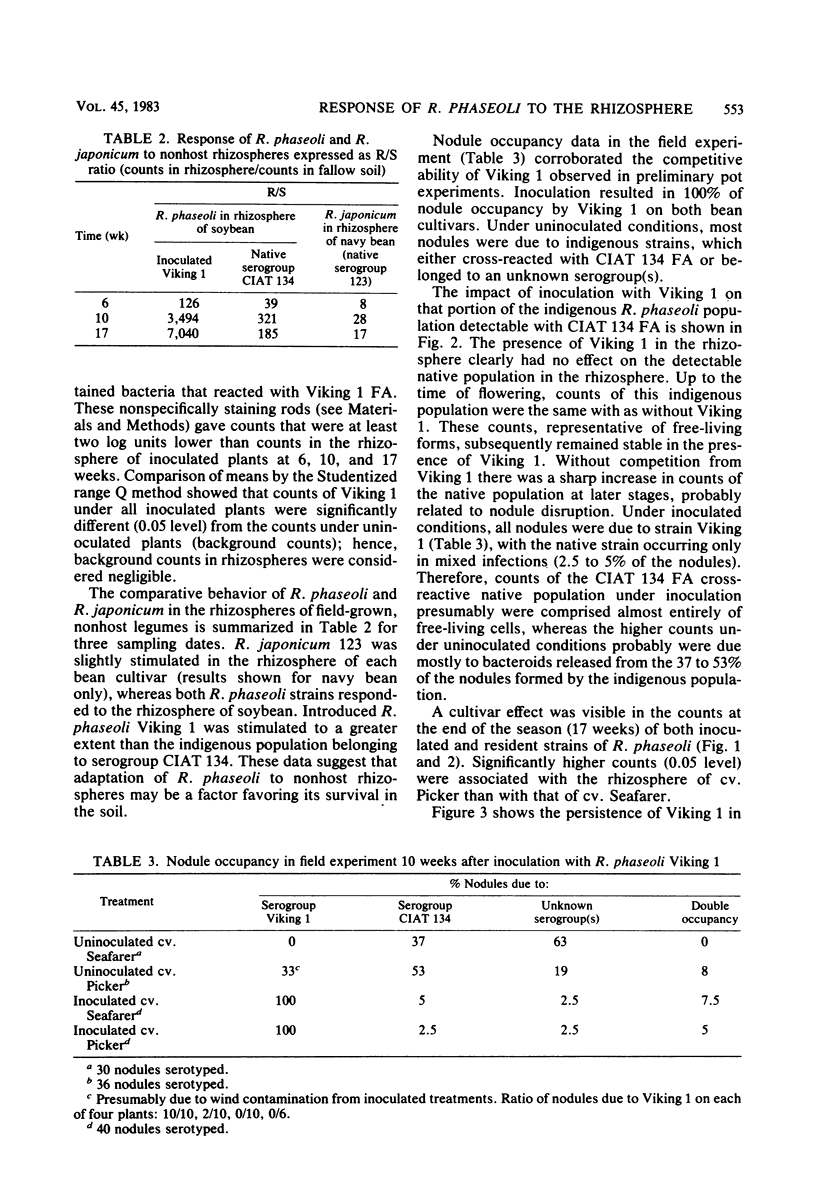
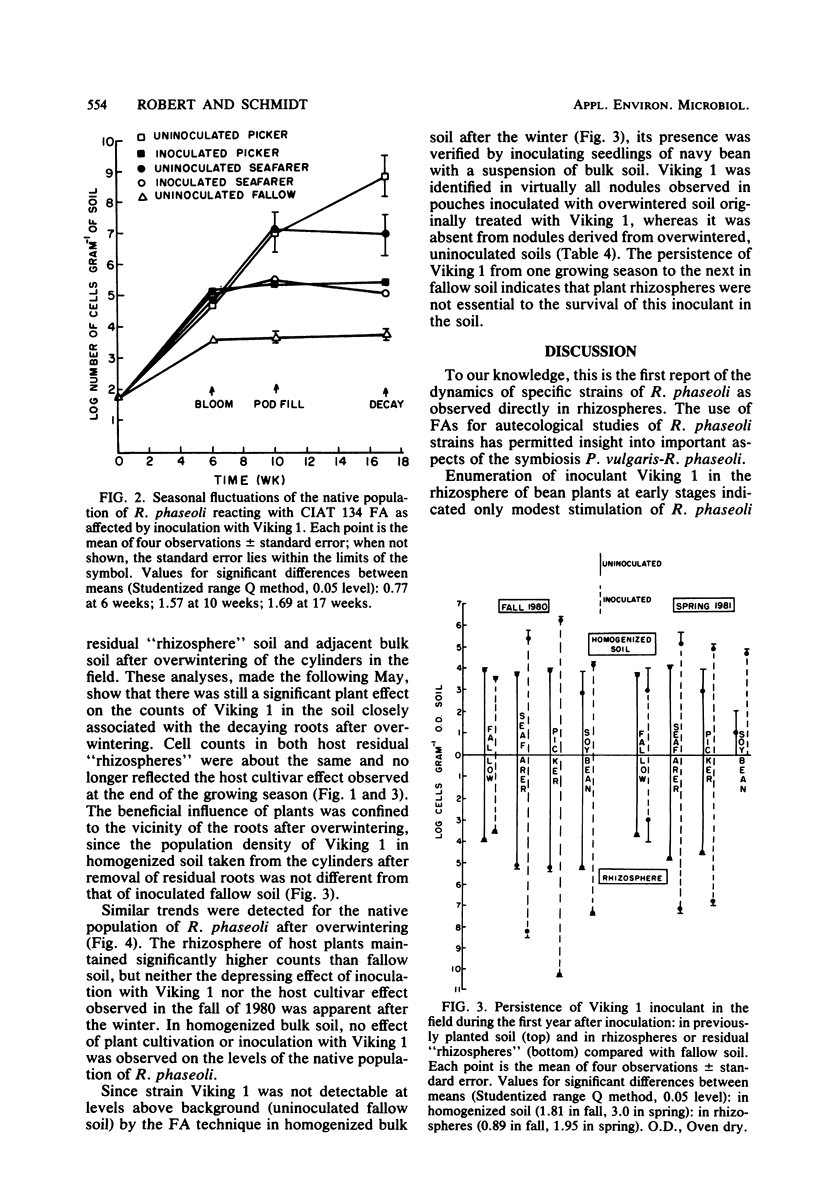
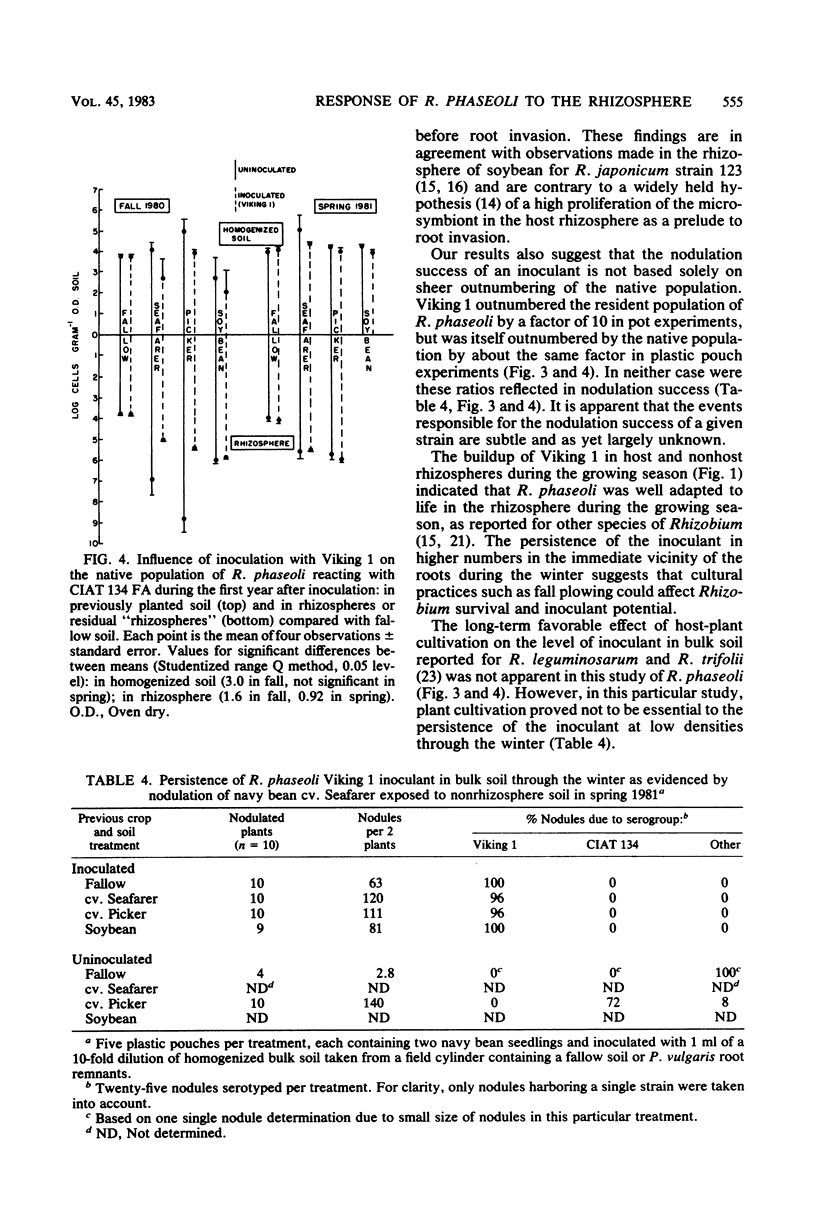
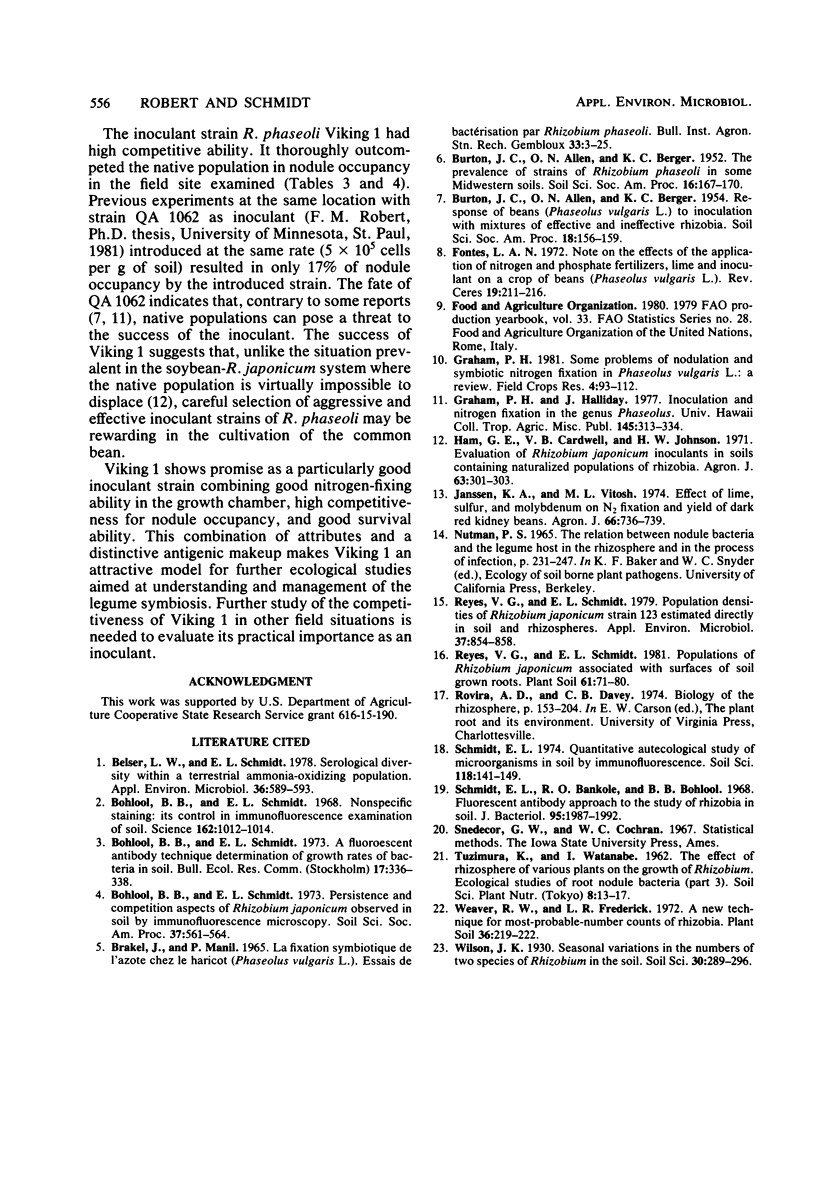
Selected References
These references are in PubMed. This may not be the complete list of references from this article.
- Belser L. W., Schmidt E. L. Serological diversity within a terrestrial ammonia-oxidizing population. Appl Environ Microbiol. 1978 Oct;36(4):589–593. doi: 10.1128/aem.36.4.589-593.1978. [DOI] [PMC free article] [PubMed] [Google Scholar]
- Bohlool B. B., Schmidt E. L. Nonspecific staining: its control in immunofluorescence examination of soil. Science. 1968 Nov 29;162(3857):1012–1014. doi: 10.1126/science.162.3857.1012. [DOI] [PubMed] [Google Scholar]
- Reyes V. G., Schmidt E. L. Population Densities of Rhizobium japonicum Strain 123 Estimated Directly in Soil and Rhizospheres. Appl Environ Microbiol. 1979 May;37(5):854–858. doi: 10.1128/aem.37.5.854-858.1979. [DOI] [PMC free article] [PubMed] [Google Scholar]
- Schmidt E. L., Bakole R. O., Bohlool B. B. Fluorescent-antibody approach to study of rhizobia in soil. J Bacteriol. 1968 Jun;95(6):1987–1992. doi: 10.1128/jb.95.6.1987-1992.1968. [DOI] [PMC free article] [PubMed] [Google Scholar]


